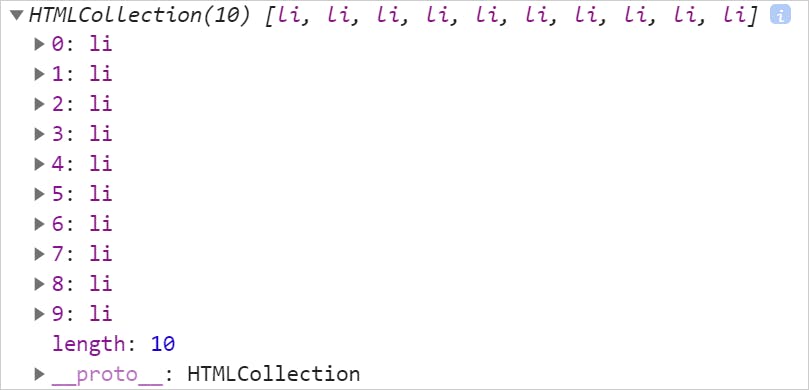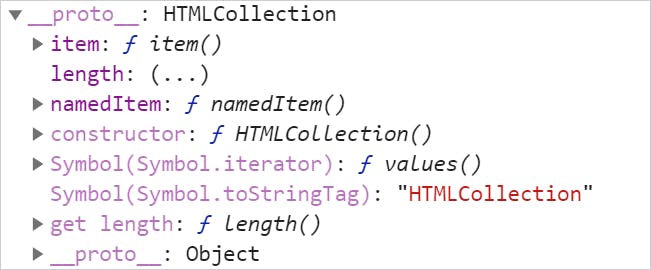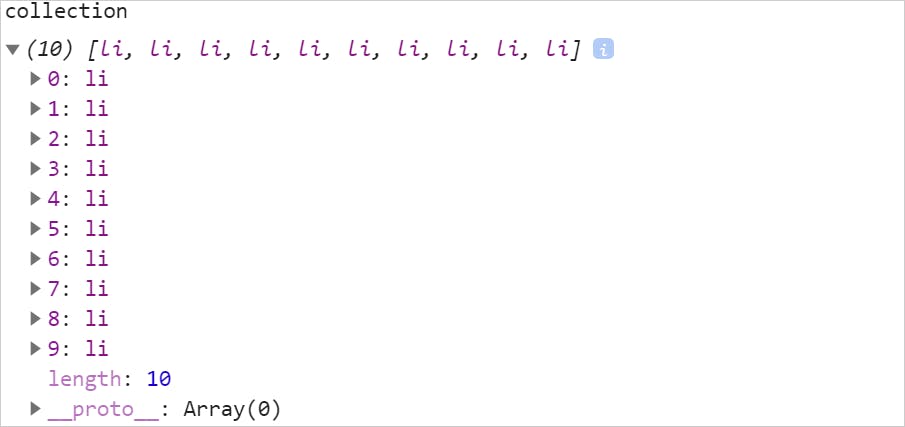
Why do you need to know about Array-like Objects?
20 January, 2023
5
5
2
Contributors
Have you ever encountered an error like this while dealing with JavaScript Arrays?
Uncaught TypeError:
children.forEachis not a function
forEach is surely a function of an Array then why do we get an error like the above? There are a few possibilities,
- You may not be using
forEachon an Array at all. By mistake, you may be using forEach on a plain JavaScript object, or a string, etc. - You may be using
forEachon anArray-Likeobject which you assumed as an array but, it is not.
In this article, we will learn about JavaScript array-like objects and how to deal with them. Hope you find it useful.
What are Array-Like Objects?
In JavaScript, objects are used to store multiple values as a complex data structure.
An object is created with curly braces {…} and a list of properties. A property is a key-value pair where the key must be a string and the value can be of any type.
On the other hand, arrays are an ordered collection that can hold data of any type. In JavaScript, arrays are created with square brackets [...] and elements are indexed.
An array-like is an object
- Has indexed access to the elements and a non-negative length property to know the number of elements in it. These are the only similarities it has with an array.
- Doesn't have any of the
Arraymethods like,push,pop,join,map, etc.
Here is an example of array-like object,
const arr_like = {0: 'I', 1: 'am', 2: 'array-like', length: 3};
If you do,
arr_like[2];
arr_like.length;
Array-like is completely different from a normal array. It is not constructed by Array or with an Array literal []. Hence it won't inherit anything from Array.prototype. That's the reason we do not see any of the Array methods in array-like.
The length property will not automatically update as well. You can not shrink the array-like by reducing the length property value as you do with arrays.
With ES6, you can check this easily,
Array.isArray(arr_like);
Array-like is rather a normal JavaScript object. Even normal Arrays are Objects in JavaScript
arr_like instanceof Object; [] instanceof Object;
But, Why Do You Need to Know About It?
JavaScript programming language has many usages of Array-like objects. You may interpret them as an Array and get into possible bugs if you are not aware. We also need to know how to deal with the Array-like object, once we recognize one.
arguments is an Array-Like Object
argumentsis an Array-like object accessible inside functions that contain the values of the arguments passed to that function.
function checkArgs() {
console.log(arguments);
}
Let's call this function with a couple of arguments,
checkArgs(1, 45);
The output in the browser console,

Did you notice the __proto__ value in the output above? Yes, it is an object, not an Array. Just like any Array-like objects, it has a length property and the values are indexed.
function checkArgs() {
console.log(arguments.length);
}
Let's try to use some of the Array methods on the arguments now.
function checkArgs() {
arguments.pop();
}
When we try to pop an element of the arguments, we will get the following error,

How about trying out forEach?
function checkArgs() {
arguments.forEach((elem) => {
});
}
No luck! we will get the error,

JavaScript HTMLCollection is an Array-Like Object
Another example of a JavaScript Array-like object is the DOM HTMLCollection. Methods like the getElementsByTagName() returns an HTMLCollection.
Let's understand it with an example,
<div id="main">
<ul>
<ol type="1">
<li>...</li>
<li>...</li>
<li>...</li>
<li>...</li>
<li>...</li>
<li>...</li>
<li>...</li>
<li>...</li>
<li>...</li>
<li>...</li>
</ol>
</ul>
</div>Now, let us try to query the DOM using the method, getElementsByTagName(). We will be using the tag li for this example.
document.getElementsByTagName('li');
The output is,

As you see, it is an HTMLCollection and looks like an Array. Let us expand the value of __proto__ and see what is the type of HTMLCollection?

Did you see that? Yeah, it is also an Object. How about we try forEach on it?
document.getElementsByTagName('li').forEach(() => {
})
No luck! It is because HTMLCollection is an Array-like object and none of the Array methods are available.

How to Deal with an Array-Like ?
In many situations, you may want to treat an Array-like as an Array. There are some advantages to it. If you can convert an Array-like to an Array, you can use all the array methods for computations. But how to do that?
There are three ways we can accomplish it.
Using ES6 Spread Operator
We can use the ES6 spread operator([...array-like]) to convert an Array-like to an Array. Let us revisit the example of the arguments again.
function checkArgs() {
[...arguments].forEach((elem) => {
console.log(elem);
});
}
We are using the spread operator on arguments and now, allowed to use forEach on it.
Try,
checkArgs(1,45);
Output,
1
45
Use Array.from(array-like)
You can use Array.from(array-like) to convert an Array-like to an Array.
We can do the following for our HTMLCollection example,
const collection = Array.from(document.getElementsByTagName('li'))
If you do console.log(collection), you will find this in the browser console,

Please check the value of __proto__ now. It is an Array.
Using the slice Method
In the pre-ES6 era, you can use the slice() method to do the conversion. But wait, isn't the slice() method is from Array? How are we going to use it on an Array-like? Check this out,
const args = Array.prototype.slice.call(arguments);
There are a few things going on there. Let me explain.
Array.prototypegives us access to all the methods and properties.- We can’t call the
slice()method directly, thethiskeyword point to Array, not to the arguments variable. call()is the prototype method of theFunctionobject. It allows us to change what thethisvariable points to inside a function.
In Summary,
Let us summarize what we have learned,
Array-likeis not an Array. They just have indexed access to the elements and a length property. All the similarities with an Array end here.Array-likeis just like a normal JavaScript Object.- JavaScript language has many
Array-likeobjects that you may end up using. - There are three ways to convert an Array-like to an Array so that, you can deal with it properly. Use the
spreadoperator,Array.fromor theslice()method.
I hope you find this article insightful.


